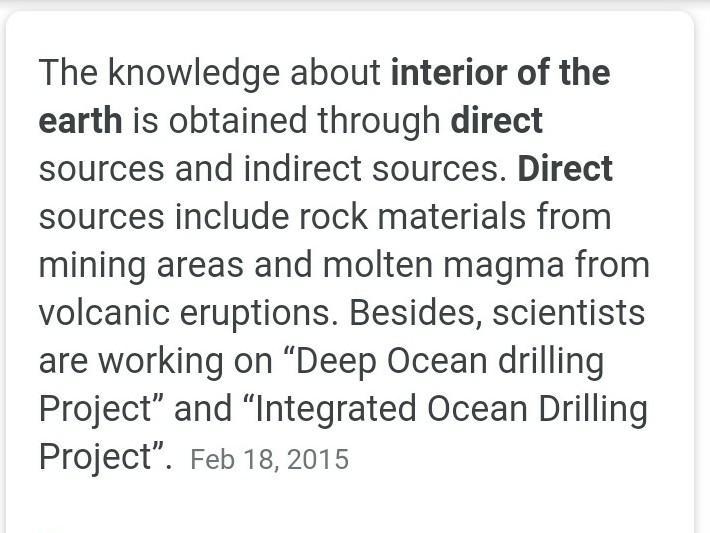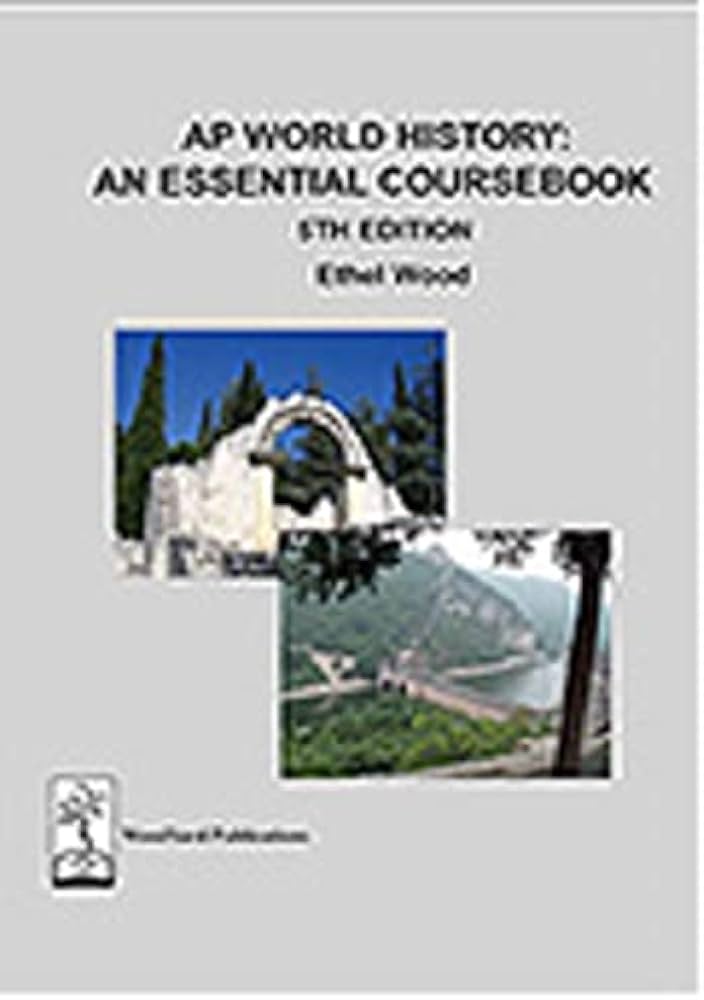Why Can T We Get Direct Information About The Interior Of The Earth?
The Earth’s interior is an enigma due to its extreme depths and inaccessibility. Despite advances in science and technology, the innermost parts of the Earth remain largely unknown and unreachable. It is impossible to drill deep enough to reach the Earth’s mantle and core, and the seismic waves used to study the Earth’s interior are limited in their abilities. Therefore, scientists must rely on indirect methods to infer what lies beneath the Earth’s surface. This includes studying seismic activity, examining the composition of Earth materials, and using computer models to simulate the effects of pressure and temperature on the Earth. Despite these efforts, much remains unknown about the Earth’s interior, and new discoveries are constantly being made.
What We Know About Earth’s Interior
We are unable to get direct information about the interior of the Earth due to the sheer depth of its core. Despite this, scientists have been able to make several educated guesses about what lies beneath the Earth’s surface.
Using seismology, scientists have been able to map out the Earth’s core and inner structure. Seismic waves travel through the Earth’s layers, allowing scientists to identify changes in speed and direction of the waves, which they can then use to determine the composition of the layers.
Scientists have identified four distinct layers of the Earth – the crust, mantle, outer core, and inner core – each with distinct chemical and physical properties. The crust is the outermost layer, which is made of solid rock. The mantle is a layer of hot molten rock, while the outer core is a liquid metal layer. The inner core is thought to be a solid iron-nickel ball the size of the Moon.
The Earth’s core is incredibly dense and hot, making it impossible to explore directly. However, by studying seismic waves, scientists have been able to uncover several facts about the Earth’s core, such as its composition, temperature, and pressure. Despite our limited knowledge, the information scientists have been able to gather gives us a better understanding of how the Earth works and how it has evolved over time.
Constraints on Learning More About Earth’s Interior
Learning more about the interior of the Earth isn’t just a matter of drilling deep enough. There are several physical and technical constraints that limit our ability to learn more about the Earth’s interior.
First, the temperature and pressure of the Earth’s interior increase with depth, and the pressure increases exponentially. This makes it difficult to send instruments to the depths of the Earth, as well as to retrieve any data they may collect. Additionally, the Earth’s mantle is composed of largely solid rock, which makes it difficult to travel through.
Second, seismic waves, which can be used to map the Earth’s interior, are blocked by the Earth’s crust. As a result, we can only map the Earth’s interior to a certain extent.
Finally, there is limited data on the Earth’s core, due to its great distance from the surface. The core is composed of liquid and solid iron, and the extreme temperatures make it difficult to study.
Despite these constraints, researchers continue to use seismology, geodesy, and other techniques to learn more about the Earth’s interior. While it may never be possible to fully map the Earth’s interior, scientists are constantly finding new ways to gain a better understanding of the Earth’s inner workings.
Investigating Earth’s Interior Through Seismology
Earth’s interior has remained a mystery for centuries; however, advances in technology have enabled us to unlock its secrets. Seismology is the study of earthquakes and the waves they create. By analyzing the seismic waves that travel through the earth, scientists are able to determine the structure and composition of the Earth’s interior. By deploying seismometers around the world, scientists are able to detect and measure the seismic waves that travel through the Earth’s interior and surface. By studying the properties of the seismic waves, scientists are able to infer the different layers of the Earth’s interior and the material that makes up each layer. Additionally, seismology can be used to infer the presence of large bodies of water and molten rock deep within the Earth. Seismology has enabled us to better understand the Earth’s interior and its composition.
Investigating Earth’s Interior Through Geochemistry
Earth is an immense and complex planet with many mysteries to uncover. One of the most daunting questions for scientists is why we cannot get direct information about the interior of the Earth. After centuries of research and technological advancement, we are still unable to confidently answer this question. However, the answer lies within geochemistry – the study of the chemical composition of rocks, minerals, and soils.
Geochemistry can provide us with valuable insight into the interior of the Earth by helping us to understand the composition of rocks and minerals. By analyzing the structure and composition of rocks, minerals, and soils we can gain information about the conditions and processes that have formed them. We can also gain insight into the environment in which they formed over time. For example, the composition of rocks can tell us about the temperature and pressure that were present at the time of formation.
In addition to providing insight into the formation of rocks and minerals, geochemistry can also provide us with clues about the interior of the Earth. By studying the composition of minerals, we can learn about the types of elements that are present in the Earth’s mantle and core. We can also gain insight into the presence of certain elements in different parts of the Earth’s interior.
Geochemistry is an invaluable tool for uncovering the mysteries of the Earth’s interior. By studying the composition of rocks, minerals, and soils, we can gain insight into the formation of the Earth and the environment in which it formed. We can also learn about the elements present in the Earth’s mantle and core. Geochemistry is an important tool for understanding the Earth’s interior and unlocking its mysteries.
Investigating Earth’s Interior Through Drilling
It’s no secret that the Earth’s interior is largely a mystery to us. We can’t see inside the planet, so our only access to it is through indirect methods. One of the primary techniques used to gain a better understanding of the Earth’s interior is drilling. Drilling is a process of mechanically boring a hole in the Earth’s surface that allows us to access and collect samples from the planet’s interior. By studying these samples, scientists can gain valuable insights into the composition, temperature, and pressure of the Earth’s interior.
Drilling projects have been carried out since the late 19th century and have become increasingly sophisticated over the years. Recently, scientists have begun using new technologies such as diamond-tipped drills and ultra-deep drilling rigs to explore deeper into the Earth’s crust. These projects have revealed valuable information about the Earth’s interior, such as the presence of liquid iron and other substances.
Drilling is an invaluable method of investigating the Earth’s interior, but it also has its limitations. For example, drilling is limited to areas that are accessible from the Earth’s surface. This means that important information about the Earth’s mantle and core can’t be obtained using this method. In addition, the cost of drilling projects can be prohibitively expensive and the process itself can be dangerous.
Despite its limitations, drilling remains an essential tool in the study of the Earth’s interior. By carefully studying the samples obtained from drilling projects, scientists are able to gain valuable insights into the composition and structure of the Earth’s interior, and therefore gain a better understanding of how the planet works.
The Future of Earth’s Interior Exploration
Exploring the interior of the Earth has been a long-standing goal of scientists, geologists, and others interested in the planet. Yet, despite our best efforts, we remain largely in the dark when it comes to understanding the Earth’s interior. To date, we have been able to make only limited observations from the surface, relying heavily on indirect methods such as seismic waves or satellite-based data to gain insight.
But the future of Earth’s interior exploration is looking brighter. Technological advances are allowing us to get closer to understanding the Earth’s interior than ever before. Recent advances in seismic imaging, geothermal energy exploration, and geo-magnetic surveys are all providing us with valuable information about the Earth’s interior.
In addition, new types of probes and rovers are being developed to explore the Earth’s interior in a more direct way. These include robotic probes that can be sent down to the Earth’s core to measure temperatures and pressures, as well as seismic probes that can measure seismic waves traveling through the Earth’s interior.
Ultimately, the goal is to gain a better understanding of the Earth’s interior and to learn more about how it works and how it affects us. With the advances in technology, we are getting closer and closer to achieving this goal. In the near future, we may be able to directly observe and study the Earth’s interior in ways never before possible.
FAQs About the Why Can T We Get Direct Information About The Interior Of The Earth?
Q1: How do scientists know what the interior of the Earth is made of if it is not directly accessible?
A1: Scientists study the physical properties of rocks on the Earth’s surface, seismic waves, and other data to infer what the interior of the Earth is like.
Q2: What evidence do scientists use to study the interior of the Earth?
A2: Scientists use evidence such as seismic waves, physical properties of rocks on the Earth’s surface, and remote sensing techniques to study the interior of the Earth.
Q3: How do seismic waves provide information about the interior of the Earth?
A3: Seismic waves travel through the Earth’s interior at different speeds depending on the material they travel through. By studying the speed and direction of these waves, scientists can infer the composition of the Earth’s interior.
Conclusion
In conclusion, it is difficult to get direct information about the interior of the Earth due to the fact that it is not accessible to us. The only way to gain any information about the Earth’s interior is to use indirect methods such as seismic waves, as well as studying the surface features of the Earth to gain insight into its structure. Despite the limitations, scientists are continually working to use these methods to gain a better understanding of the Earth’s interior.






